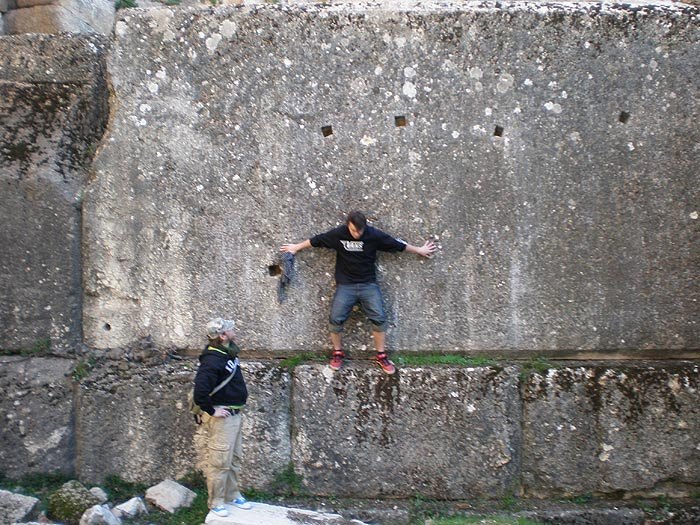Baalbek libano: segni di antiche tecnologie perdute nella lavorazione di pietre giganti
In the above photo you can see that the great “southern stone” which is in the nearby quarry is still attached to the bedrock. What I want to see is if there are still tool marks present at the attachment point. This personal inspection will allow us to ascertain if hand tools were employed or machines.
The horizontal striations seen in the above photo hint that a technology not present in Roman times was employed at Baalbek; is this an isolated example of saws at work, or will we find many more examples?
The above photo shows that at least one column at Baalbek was made from rose granite. This material may not be of local origin, and could in fact have come from the Aswan quarry in Egypt. If this is the case, then either the Romans dragged the column(s) from Egypt, or earlier builders were quarrying at Aswan.
As you can see above some of the stones of the Temple of Jupiter are immense blocks of limestone from the Baalbek quarry. They are far larger than any stones cut or shaped by the Romans. Obviously imperial Rome built their temple on top of an already present megalithic foundation.
Huge stone blocks were hardly required in the construction of the Temple of Jupiter for structural reasons, but the original builders chose to do so and clearly had the capability to cut and move them into place. I will also be inspecting the joinery to see if they are as tight fitting as those in Egypt and Peru.







Nessun commento:
Posta un commento
Salve! Hi!